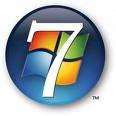
| I have been using Windows 7 Ultimate now for about 3 weeks on my main work computer, and so far, I love it. It’s fast, stable and has a lot of very cool new features. The new task bar is just great, it makes it real easy to switch between applications when you keep several open at once like I do. I have started to discover a few tips and tricks to help me get the most from Windows 7, and I thought I would share some of my favorites with you. |
| Problem Steps Recorder – Having no idea how to clearly describe what’s going on when your computer acts up to your support guru is frustrating, but Microsoft is willing to help. Windows 7 includes an excellent new solution in the Problem Steps Recorder. When any application starts misbehaving under Windows 7 then all you need to do is click Start, type PSR and press Enter, then click Start Record. Work through whatever you’ve been doing and Problem Steps Recorder will record every click and key press, take screen grabs, and package everything up into a single zipped MHTML file when they’re finished, ready for emailing to your favorite geek. It’s quick, easy and effective, and will save you and your geek hours of troubleshooting time. Switch to a projector – Windows 7 now provides a standard way to switch your display from one monitor to another, or a projector. Just press Win+ and choose your preferred display. (This will have no effect if you’ve only one display connected.) Especially handy when using a laptop to give a presentation. Right-click everything – At first glance Windows 7 bears a striking resemblance to Vista, but there’s an easy way to begin spotting the differences – just right-click things. Right-click an empty part of the desktop, for instance, and you’ll find a menu entry to set your screen resolution. No need to go browsing through the display settings any more. Right-click the Explorer icon on the task bar for speedy access to common system folders: Documents, Pictures, the Windows folder, and more. Minimize quickly with shake – If you have multiple windows open on your desktop and things are getting too cluttered, it used to be a time-consuming process to close them all down. In Windows 7 you can use the Aero Shake feature to minimise everything in seconds, using a cool mouse gesture. Grab the title bar of the window you wish to keep open and give it a shake, and rejoice in a clear desktop area. Jump Lists – Right click on a program icon on your task bar, and it displays not only an open this program and unpin command, but a list of the most recent files opened in the program. Select one and it opens the program with that file open in one click. No more File, Open, Browse! The jump list for IE displays a list of the most often visited sites so you can open them in one click as well. Create folder favorites – If you’re regularly working on the same folder in Explorer then select it in the right-hand page, right-click Favorites on the left-hand menu, and select Add to Favorites. It’ll then appear at the bottom of the favorites list for easy one-click access later. Libraries – Another method of quickly browsing to specific places in your file structure are libraries. By default, Windows 7 comes with a documents, music, pictures and video library. You can create your own (like customers) by right clicking the left pane where it says Libraries and selecting New -> Library. Once there, right click the new library and select properties, include a folder and click OK. You may also add multiple folders to a library as well as optimize it for certain file types. Window management – you can “dock” a window to the left or right half of the screen by simply dragging it to the edge; similarly, you can drag the window to the top of the screen to maximize it, and double-click the window top / bottom border to maximize it vertically with the same horizontal width. This is invaluable if you frequently have 2 documents open side by side while working (like I do). These actions are also available with keyboard shortcuts: Win+Left Arrow and Win+Right Arrow dock; Win+Up Arrow and Win+Down Arrow maximizes and restores / minimizes; Win+Shift+Up Arrow and Win+Shift+Down Arrow maximizes and restores the vertical size. This side-by-side docking feature is particularly invaluable on wide screen monitors – it makes the old Windows way of shift-clicking on two items in the task bar and then using the context menu to arrange them feel really painful. By Jim Bakic |










